
Clean Room Laboratory
A 100 m2 ISO-6 clean room with ISO-4 laminar flow workbenches for demanding, low blank sample preparation work.
Mass Spectrometry Laboratory
Features two mass spectrometers (TIMS & MC-ICPMS) for high-precision isotope ratio measurements.
General Chemistry Laboratory
Large chemistry laboratory for general use. A separate clean work area with laminar flow benches is also available.
Clean room laboratory
Our 100 m2 clean room laboratories are designed for the preparation of complex natural samples for subsequent analyses of trace metal concentrations and isotope compositions. A wide range of samples are handled, including meteorites, terrestrial rocks and sediments, seawater, atmospheric and marine particulates, and biological materials.
Sample preparation typically involves weighing, acid digestion of rocks and other solids, and separation of the target elements from the sample matrix by precipitation or ion exchange/extraction chromatography.
A particular challenge is posed by the low trace metal contents of the samples. The laboratory facility and techniques are optimized to ensure that sample contamination from reagents and handling are reduced to a minimum.
LOW-BLANK SAMPLE PREPARATION
Both laboratories are kept at cascading over-pressures with ISO class 6 (Class 1000) HEPA filtered air to provide a clean working environment. All critical sample preparation work is carried out in one of 18 laminar flow benches. These are equipped with further HEPA filters that ensure an ultra-clean ISO class 4 (Class 10) work space.
The laboratories are custom-built with essentially no exposed metal surfaces, to prevent contamination from metal corrosion. All procedures utilize only ultra-pure water and mineral acids prepared by sub-boiling distillation.
These measures reduce the laboratory contamination ("blank") to insignificant levels, typically <1% of the indigenous trace metal contents.
General chemistry laboratory
Ample space is available in two laboratories for various sample preparation activities. This includes, for example, the initial cleaning of seawater containers, sieving and leaching of sediments, and adsorption experiments on environmental samples.
One of it is a separate unclassified clean work room with an ISO class 4 fume hood and two ISO class 5 laminar flow benches which is portioned off from the main laboratory. The laminar flow benches are used mainly for handling seawater samples during aliquoting, filtration, and trace metal separations by co-precipitation. In addition, they are also used to prepare contamination-prone solid samples, such as meteorites and corals, for subsequent digestion and analysis.
Mass spectrometry lab
Variations in the isotopic compositions of elements are produced by radioactive decay or physical-chemical processes that generate isotope fractionations. Isotopic variations carry information on the timing of geological processes, past environmental conditions, or the chemical evolution of a sample or sample reservoir through time.
Isotopic variations are difficult to measure because they are typically very small (<<1 %).
The MAGIC laboratory has three mass spectrometers for high-precision isotopic analyses of a large range of elements:
- Two Nu Instruments; a Nu Plasma and a Nu Plasma II multiple collector inductively coupled plasma mass spectrometer (MC-ICPMS)
- A Thermo Scientific Triton thermal ionization mass spectrometer (TIMS)
BASIC PRINCIPLES
In detail, there are many differences between TIMS and MC-ICPMS and each technique has particular advantages. The basic principles of operation are the same for both mass spectrometers, however:
- An ion beam is generated from the sample in the ion source
- The ion beam is accelerated in the vacuum system of the mass spectrometer at high voltage and focused by a series of electrostatic lenses
- A magnet separates the isotopes of the target element by virtue of their different masses
- An array of detectors collects the separated ion beams
TIMS
In TIMS, the sample is loaded onto a small (~5 mm long) metal filament. The filament is placed in the ion source, where it is heated to 1000° to 2000º C to ionise the sample.
MC-ICPMS
In any ICPMS, the sample is in liquid form (usually dissolved in diluted nitric acid) and introduced by a nebulizer into a hot plasma where it is ionised.
APPLICATIONS
The Nu Plasma MC-ICPMS can measure the isotopic compositions of a wide range of elements at high precision (±20 ppm) and is suitable for precise stable isotope analyses, the Nu Plasma II being the more sensitive of the two instruments.
The Triton TIMS produces the most precise isotopic data (±5 ppm = 0.0005%) and is ideal for analyses of very small samples.
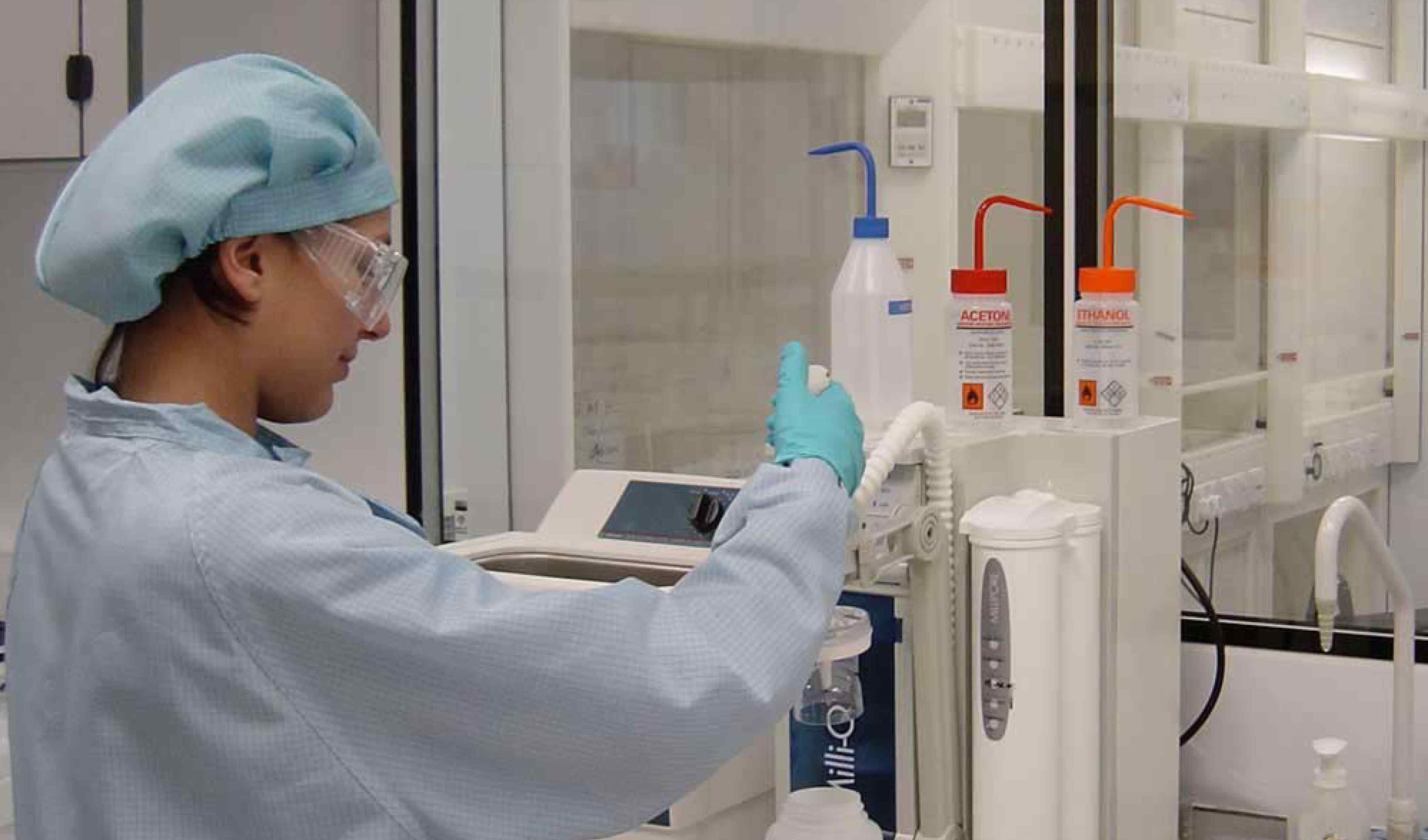
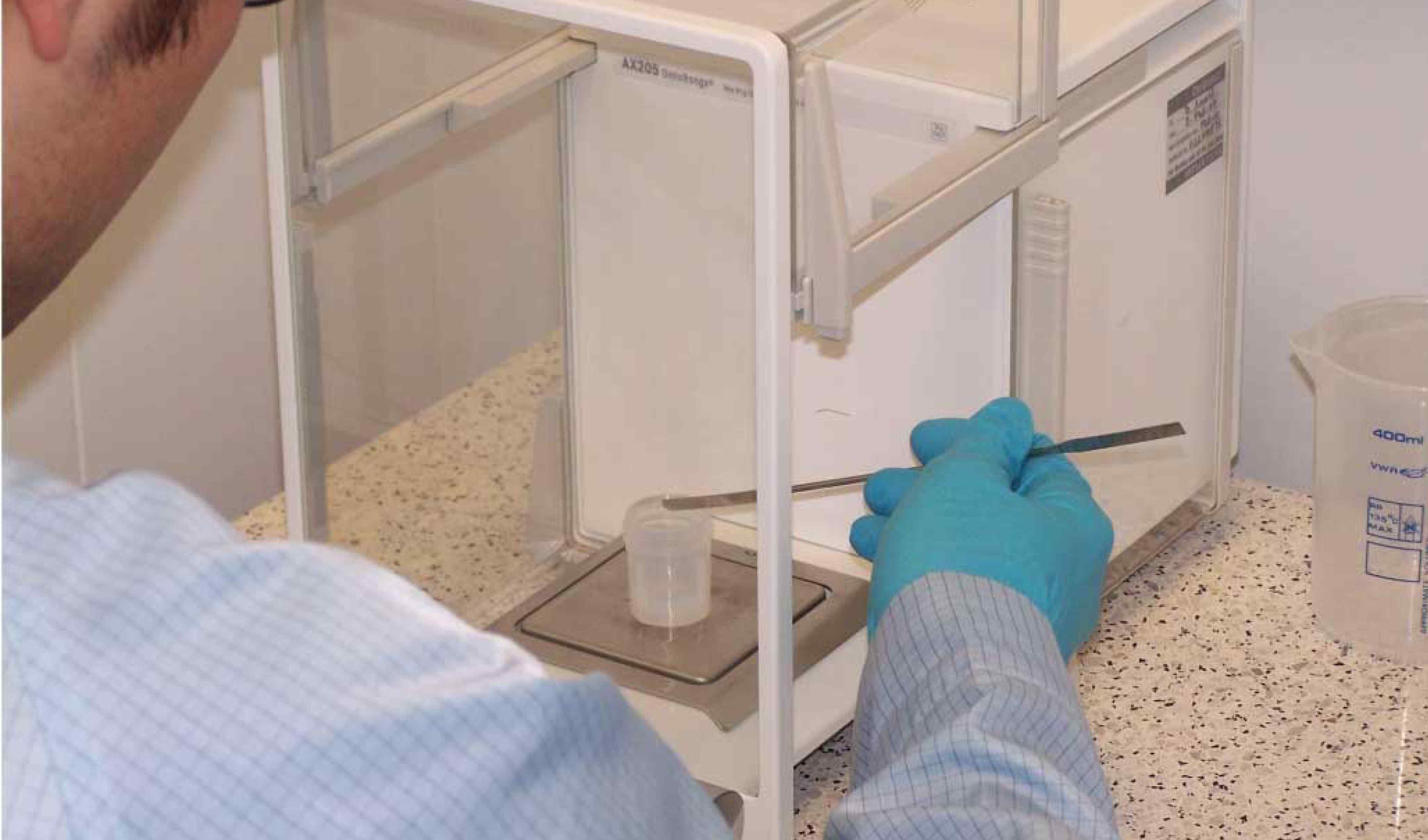
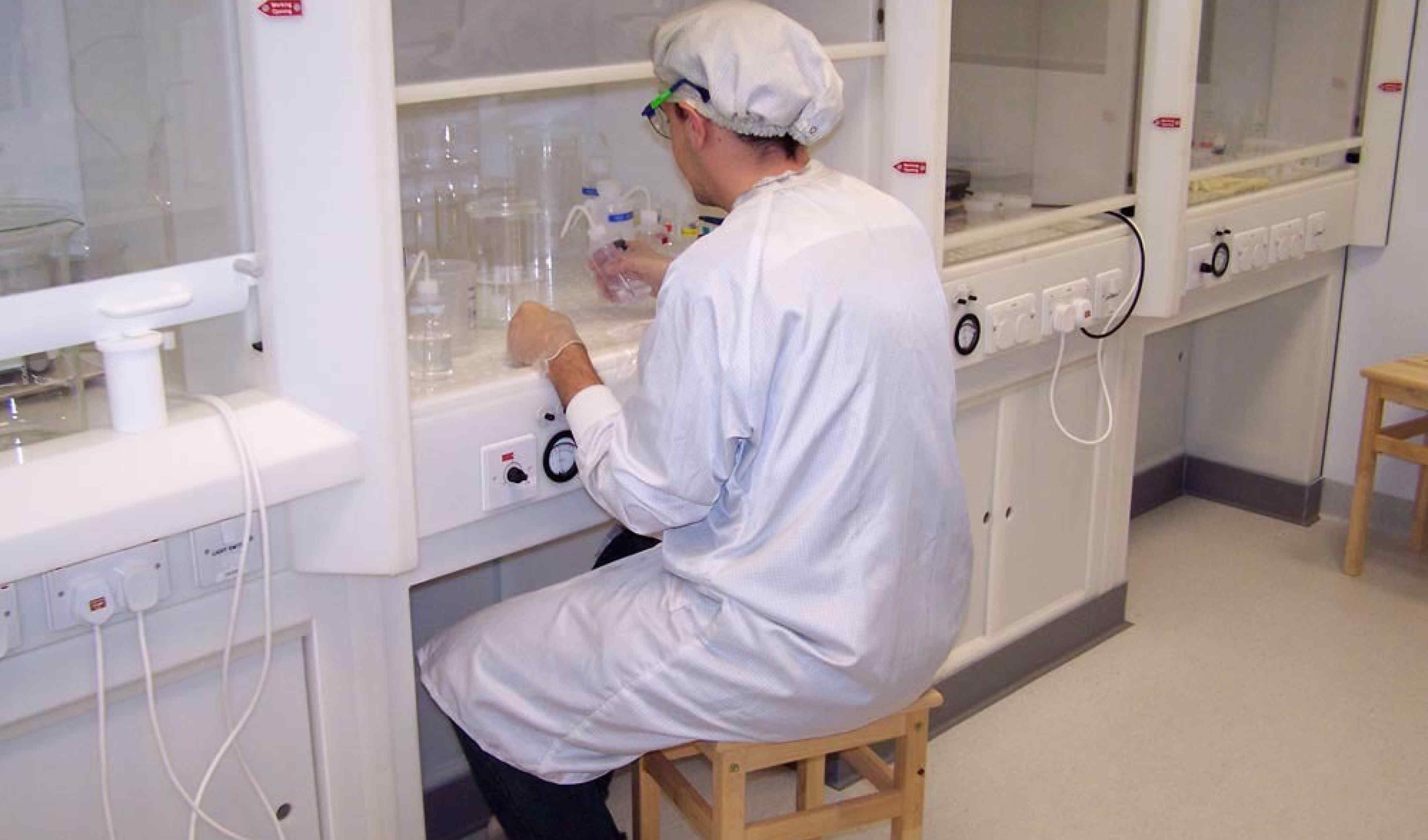
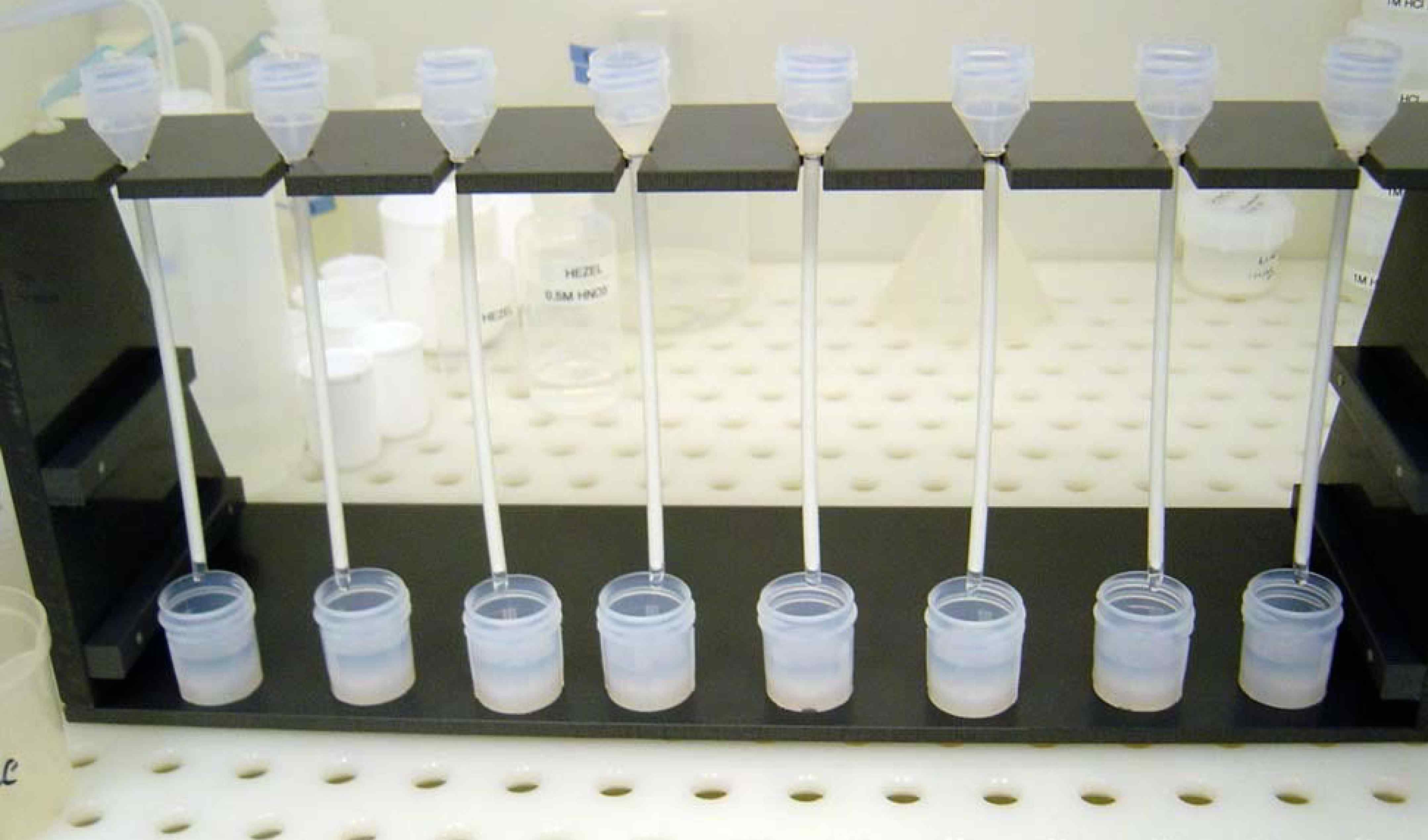
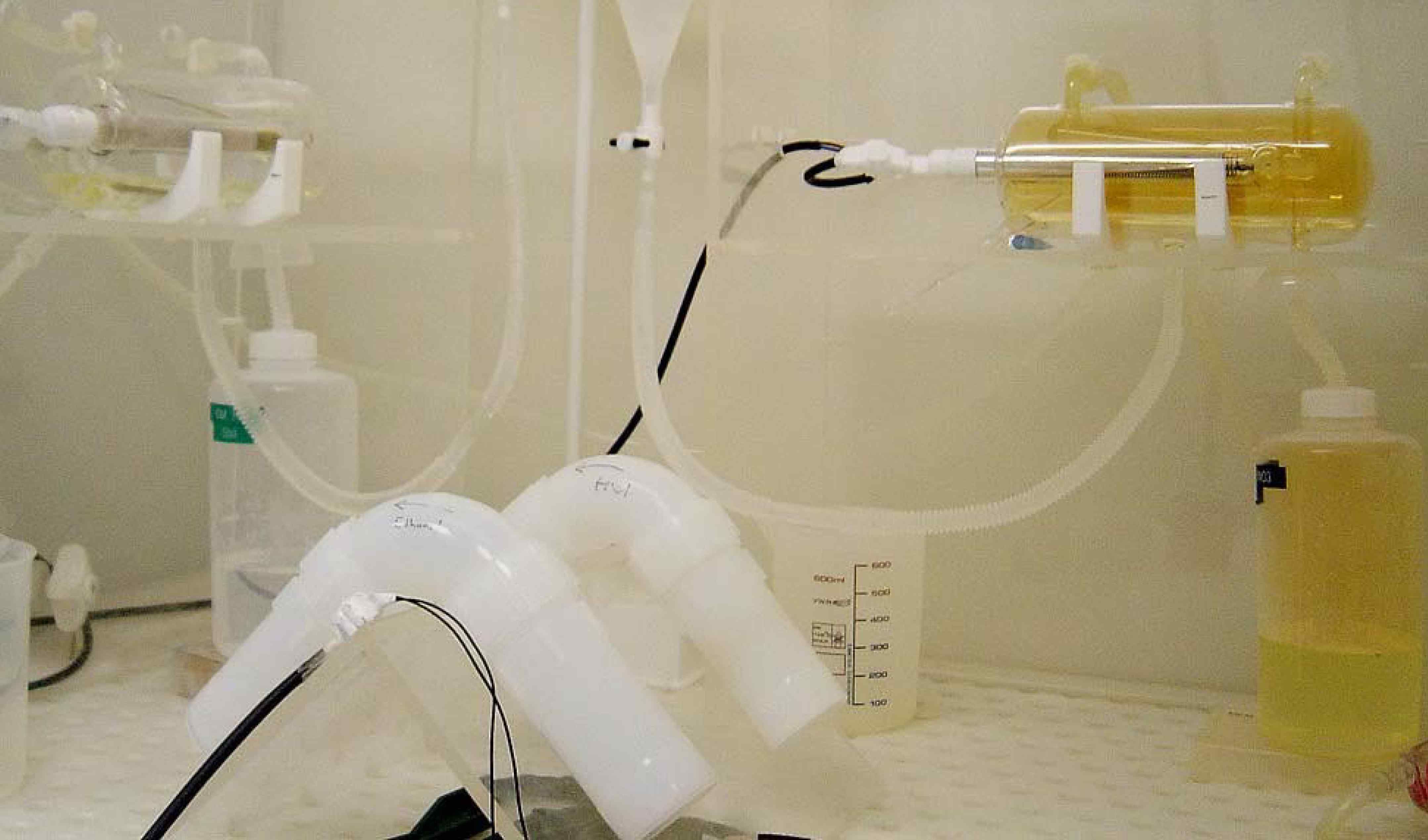
--tojpeg_1446563901423_x4.jpg)
--tojpeg_1446563674606_x4.jpg)
--tojpeg_1446563736673_x4.jpg)
--tojpeg_1446563772136_x4.jpg)
--tojpeg_1446563813581_x4.jpg)
--tojpeg_1446564029388_x4.jpg)
--tojpeg_1446564073582_x4.jpg)
--tojpeg_1446564107066_x4.jpg)
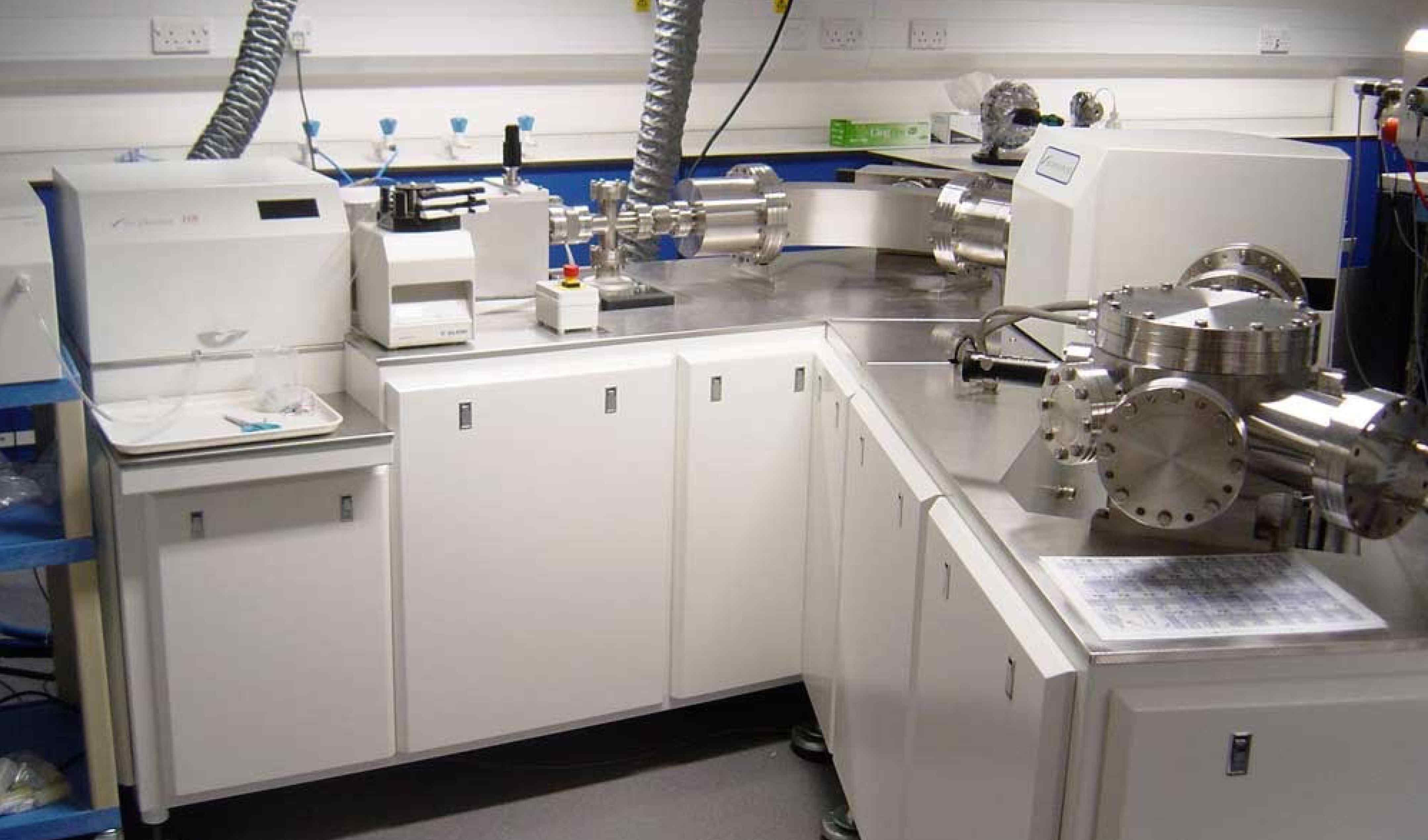
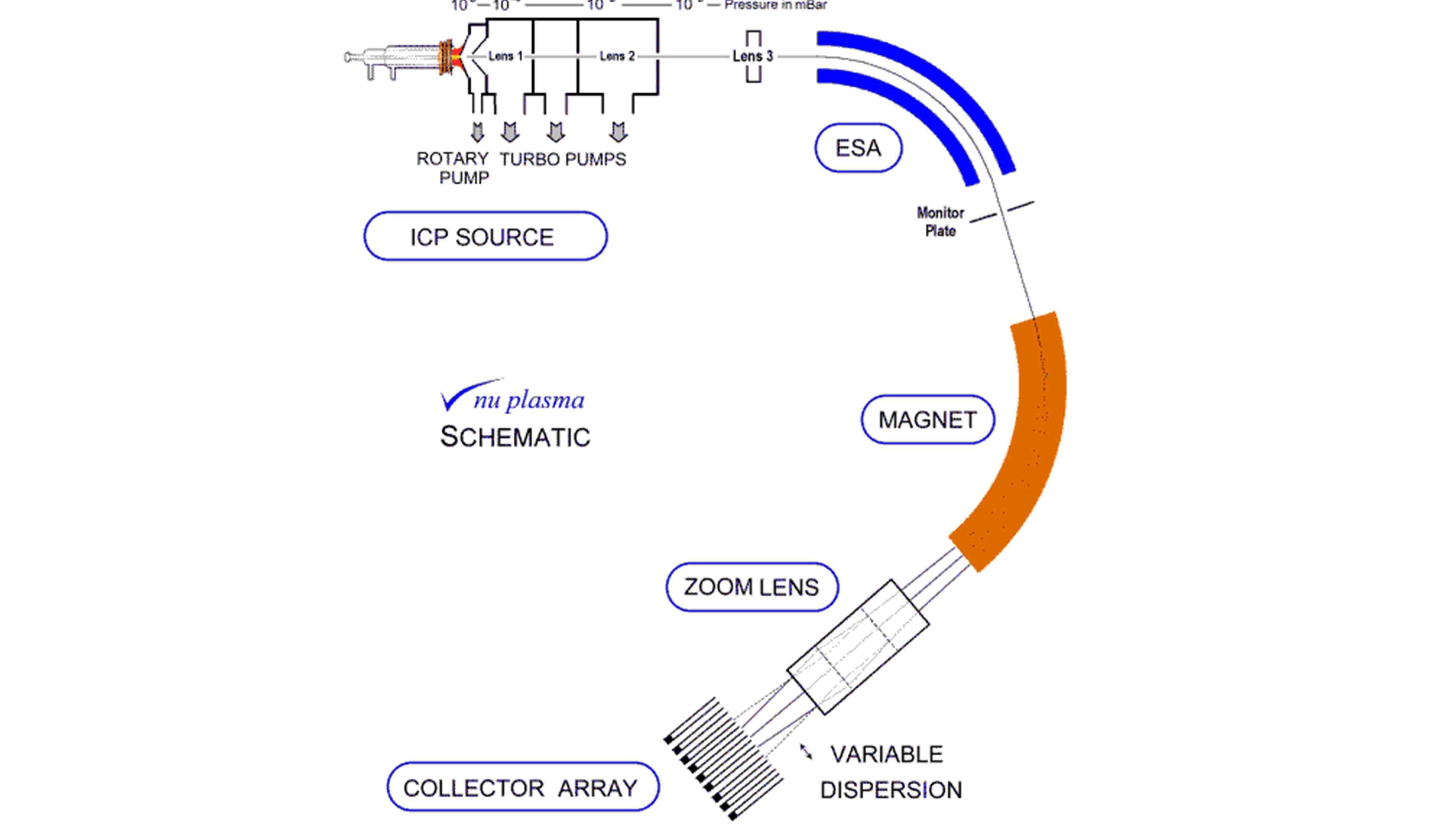
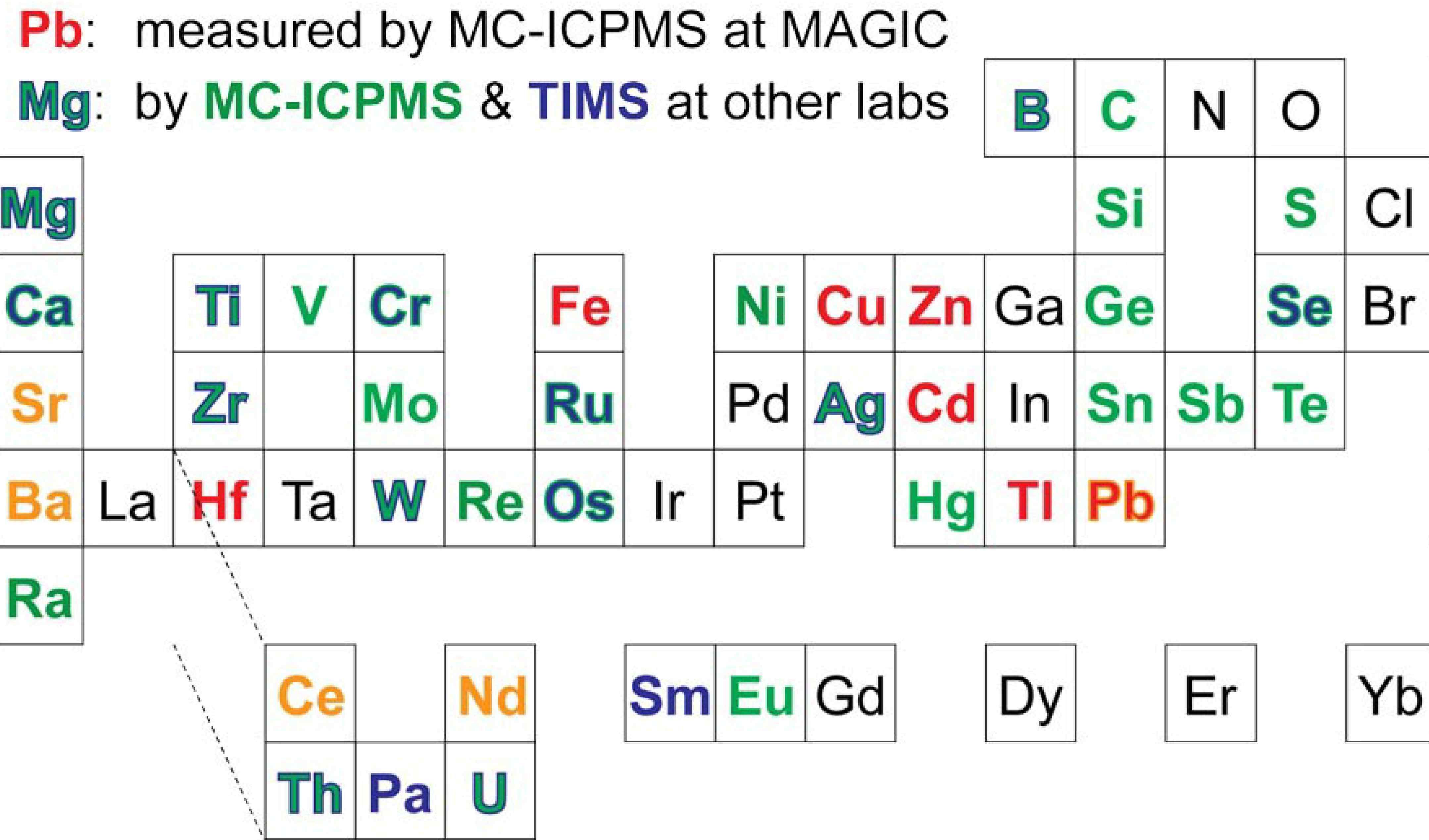
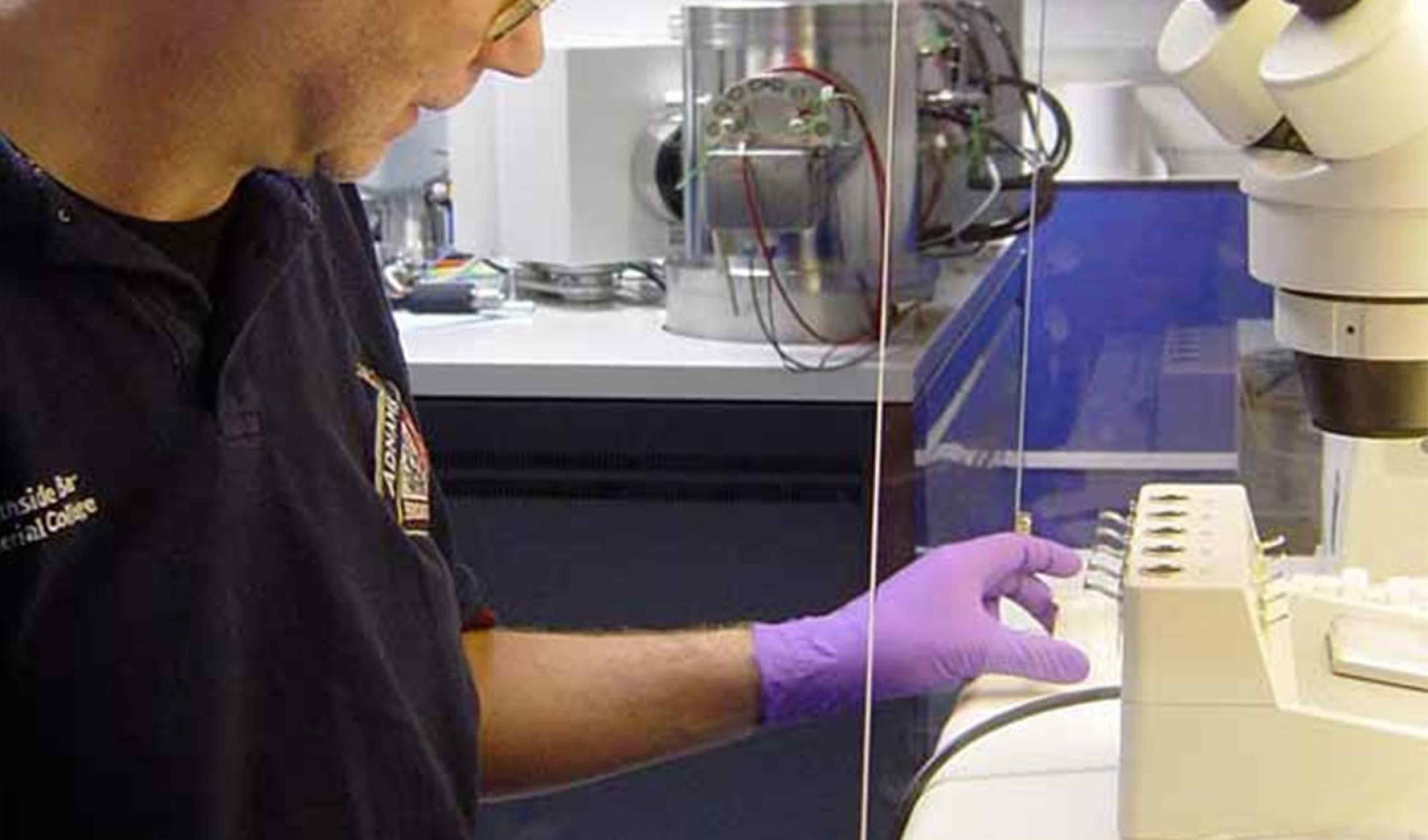
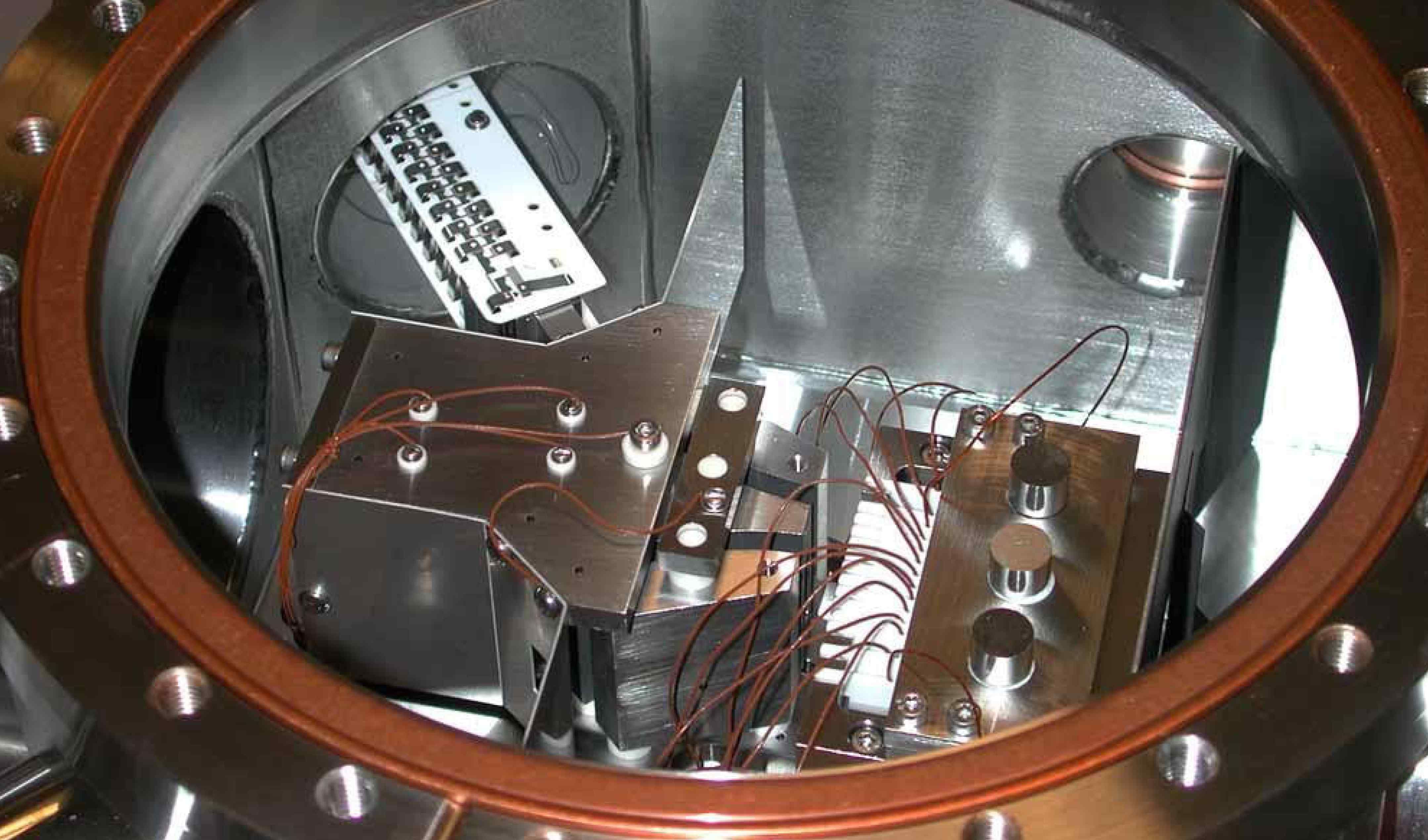
--tojpeg_1446564448595_x4.jpg)
--tojpeg_1446564519139_x4.jpg)
--tojpeg_1446564588786_x4.jpg)
--tojpeg_1446564640214_x4.jpg)